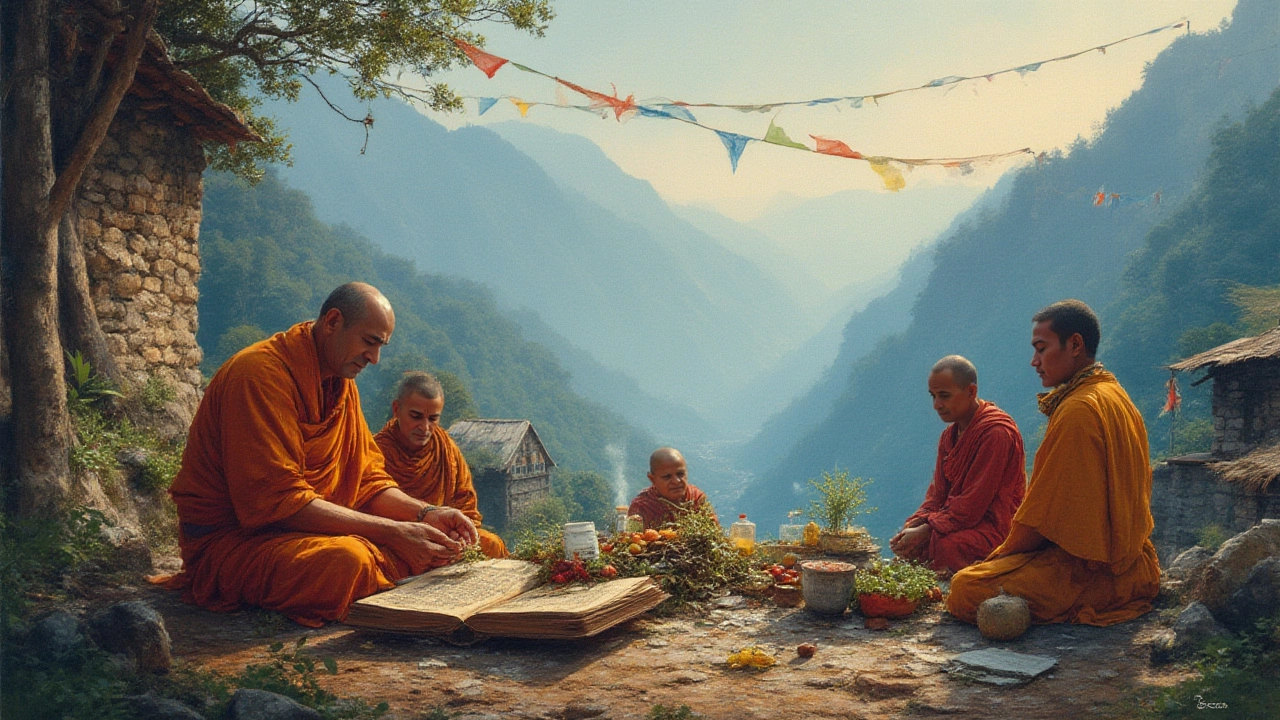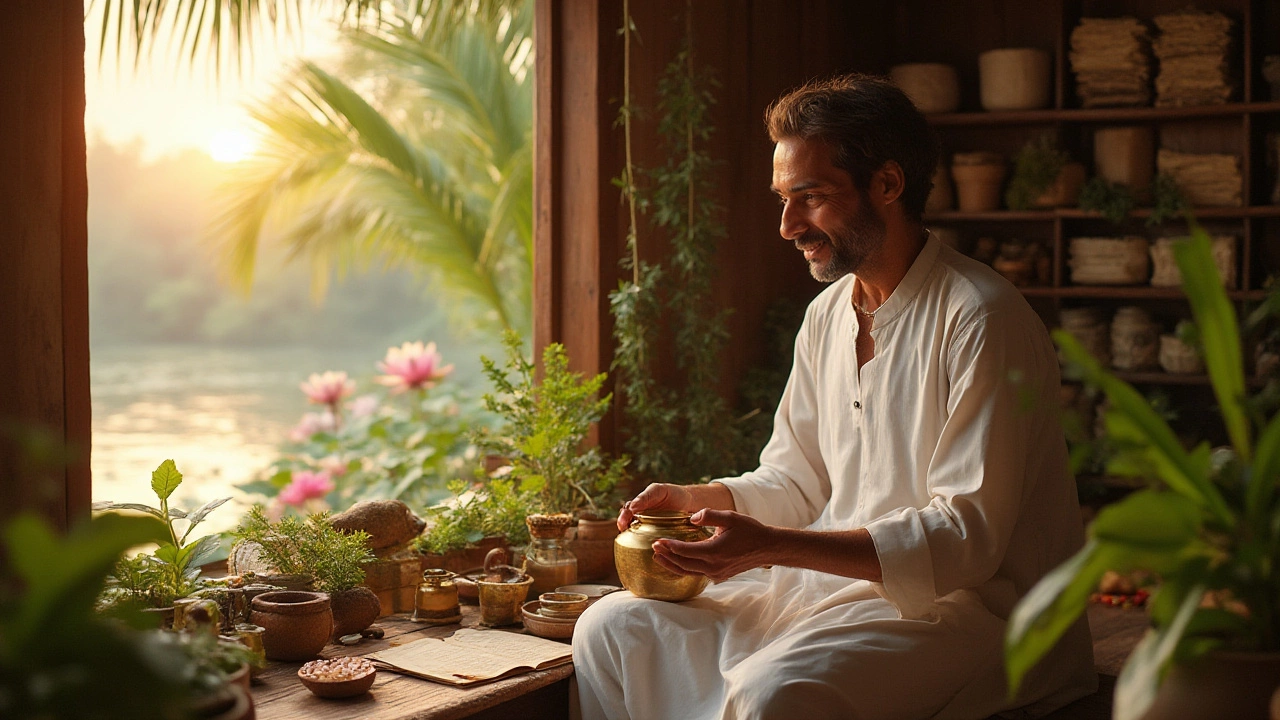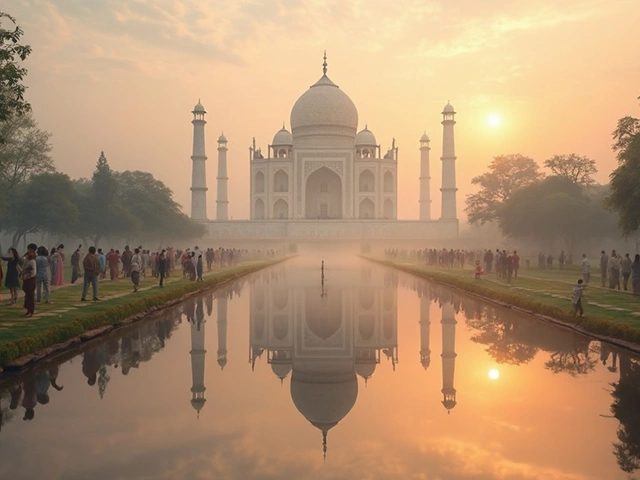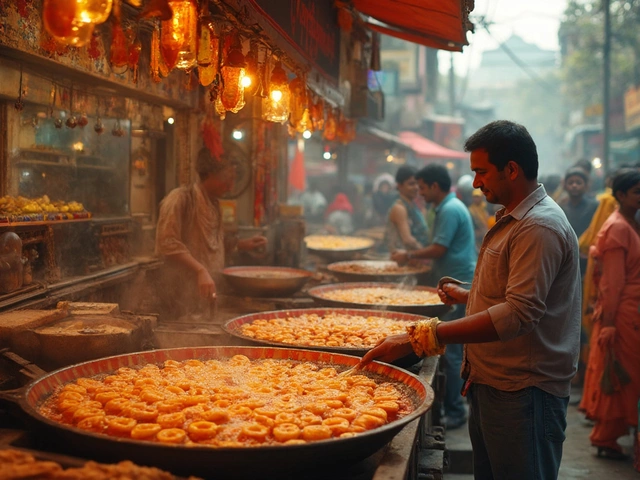If there's one wellness trend that's not just a fleeting craze, it's Ayurveda. Walk into any spa or scroll wellness forums, and you'll find people raving about ancient herbal oils, detoxes, and treatments—Ayurveda is everywhere. But where can you actually get the real deal, the kind that doesn't taste like an overpriced smoothie from a chic spa menu? A truly transformative Ayurvedic experience depends almost entirely on where you go. Let's talk about the landscapes, traditions, and quirks that shape Ayurveda around the world—because the differences are bigger than most people realize.
India: The Birthplace and Global Heartbeat of Ayurveda
Ayurveda isn’t just a buzzword in India—it’s woven through India’s daily life, particularly in Kerala, Karnataka, and Uttarakhand. People there don’t just see Ayurveda as a spa treatment; it’s medicine, a philosophy, and part of family traditions. While Ayurveda shows up everywhere from Delhi’s high-end clinics to rural home kitchens, Kerala on the southwestern coast still outshines the rest. Why? The monsoon climate, abundant medicinal herbs, and 3,000 years of continuous tradition mean the practice stayed close to its roots. You’ll find traditional ashrams and accredited hospitals where locals line up right alongside tourists. Treatments are personalized. Some, like Panchakarma (a detox therapy no tourist should wing without a real pro!), are carried out over weeks, crafted after a detailed look at your life, diet, and stress levels rather than a vague questionnaire.
Here’s a stat that’ll raise your eyebrow: India has over 800,000 registered Ayurvedic practitioners and more than 250 officially recognized Ayurvedic colleges as of 2024. These aren’t all dusty textbook rooms or Instagrammable eco-resorts. You can get simple consultations in towns like Rishikesh or go all-in with immersive residencies at places such as Kottakkal Arya Vaidya Sala or Somatheeram. If you want the full doctor-patient experience—diagnosing, tailoring, and follow-ups—India leads the way. Many clinics mix ancient Sanskrit manuscripts with 21st-century medical equipment. Even better, the Indian government, through the Ministry of AYUSH, regulates standards so tourists aren’t paying premium prices for watered-down services.
Many travelers are fascinated to find that Ayurveda here is incredibly local. For instance, the oils and herbal pastes are made from plants harvested in the region rather than generic imports. Ayurveda merges with yoga and meditation—Kerala hotels offer sunrise yoga classes followed by traditional Shirodhara (that’s the warm-oil-forehead treatment you see in glossy brochures). More people are turning to Ayurvedic hospitals during every rainy season, especially those from urban centers dealing with stress and tech burnout. The authentic experience, the generational expertise, and the government-backed credibility? No place matches India’s depth.
Check out this comparison of costs and duration for typical Ayurvedic treatment programs between India and other nations:
| Country | Minimum Duration | Average Cost (USD) | Accreditation Authority |
|---|---|---|---|
| India | 7-28 days | 300 - 2,500 | Ministry of AYUSH/State Boards |
| Sri Lanka | 5-21 days | 500 - 3,000 | Dept. of Ayurveda |
| Germany | 3-7 days | 700 - 5,000 | Private |

Sri Lanka: Ayurveda’s Island Cousin with a Twist
Hop across the sea to Sri Lanka, and you’ll notice the vibe instantly shifts. Sri Lanka has its own ancient Ayurveda roots (dating as far back as 6th century BCE), but here it’s been influenced by the island’s Buddhist traditions, clay-based rituals, and plantation culture. You’ll find fewer giant hospitals and more intimate wellness retreats—think open-air bungalows surrounded by spice gardens, peacocks wandering the grounds, and therapists who feel more like storytellers than hospital staff. The focus on gentle therapies fits the slower island pace, and you’ll see wider use of native herbs, like gotu kola and sandalwood, grown in family-run gardens.
What makes Sri Lanka special? For one, the treatments are often bundled with herbal cooking lessons, meditation walks, or Buddhist chanting. Many travelers stick around not just for the therapies but also for a full digital detox—these places are usually found away from the bustling capital, tucked into rainforest hills or near the ocean. Hotels like Barberyn and Siddhalepa have been around for decades and have built a global fan base for their fusion of luxury and authenticity. Personalized attention is standard here. Many practitioners maintain handwritten journals of their patients; you’re treated more like a guest than a tourist.
The Sri Lankan Department of Ayurveda oversees standards and licensing, but there’s more freedom for individual clinics. This can be a blessing if you want a tailored experience or a risk if you don’t do your homework. Always check if the practitioner is officially registered—unlicensed operators may be friendly, but they might skip important safety checks. Interestingly, Sri Lanka attracts lots of Europeans looking for longer, meditative stays—almost 40% of wellness tourists in 2023 were repeat visitors, according to tourism surveys. Treatments often start at a more affordable rate compared to Western resorts but can rise quickly at luxury locations. Some visitors even do a tour of the island, jumping between practitioners for fresh perspectives on their health and life story.
The main tip here—don’t expect the exact same formulas as in Kerala. Sri Lanka’s Ayurveda has gone its own direction with local plants, spices, and techniques adapted over centuries. You’ll often taste local cane jaggery in tonics, drink a lot more herbal teas, and experience sunbalm massages that are rare across the sea. The spiritual infusion from Buddhist culture makes wellness more community-focused. If you want a balance between authenticity and beautiful landscapes, Sri Lanka is a serious contender.

Ayurveda Beyond South Asia: Global Hotspots and Things to Watch Out For
Here’s where Ayurveda gets interesting. Post-pandemic, tons of Ayurvedic clinics have popped up in places like Germany, Bali, New Zealand, and even the US West Coast. These centers usually market themselves as “authentic” but, let’s be honest, it’s a gamble—some are run by passionate, trained Indian doctors, while others are more like fancy spas with light herbal wraps thrown in. The quality and legality range wildly. In Germany, for example, Ayurveda has become a part of “medicinal wellness.” State-of-the-art resorts combine classical treatments with modern diagnostics, but they’re regulated under private associations, not government health authorities. That means standards shift from place to place.
The biggest plus of going outside South Asia? Privacy and comfort. Language is less of a barrier, hygiene standards match Western expectations, and diets can be tweaked if you aren’t keen on ghee or pungent tonics. Some travelers, especially those anxious about illness or language confusion, feel safer starting with a retreat closer to home. In places like the US, and here in Wellington, you’ll find yoga studios offering short “Ayurvedic tune-up” packages—great for a quick introduction, but they rarely match the depth or intensity of South Asian centers.
There’s a growing trend of hybrid therapies mixing Ayurveda with local wellness philosophies: German clinics spice things up with Kneipp therapy, Bali resorts invite local shamans, and Californian spas blend Ayurveda with acupuncture. While this offers some fun mashups, purists say most Western clinics focus on relaxation and aesthetics, not the deep healing you’d get in India or Sri Lanka. Prices in these destinations can often shock first-timers—a week at a German Vitae retreat can easily top $5,000. At that price, you’d get a month of care at an elite Indian center, with a team of doctors available daily.
What should you watch out for? Check therapist credentials. Ask whether doctors are certified in traditional Ayurvedic medicine or if it’s just another yoga add-on. Look for accreditations or memberships in professional organizations—these don’t guarantee authenticity, but they weed out the worst options. Don’t be afraid to read traveler reviews; the best advice comes from others who’ve done the deep detox before you.
If you want a quick overview, here’s a comparison of three standout locations for Ayurveda experiences across continents:
| Country | Core Features | Unique Perks | Best For |
|---|---|---|---|
| India | Ancient traditions, full medical system | Custom formulas, deep detox, government approval | Healing chronic issues, study abroad, extended stays |
| Sri Lanka | Personalized retreats, Buddhist influence | Combination with island detox, culinary components | Gentle rest, affordable wellness, cultural immersion |
| Germany/NZ/US | Modernized, global flair | Luxury spas, language ease, comfort | First-timers, relaxation, light therapies |
So, who wins the crown for the best country for Ayurveda? For deep, medical-grade healing, massive practitioner networks, and time-honored rituals, India is hands down the global center. Sri Lanka takes the prize for gentle, personal, and spiritual detoxes. The rest of the world is catching up, but they’re still more about the spa experience than full Ayurvedic immersion. Know what you want out of Ayurveda, do your research, and don’t just follow the nearest Instagram ad—you owe your body the genuine thing.





